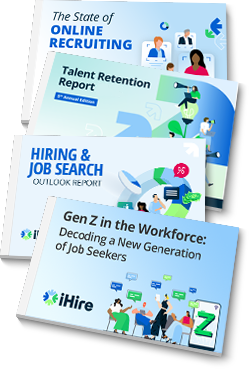- Employer Resources
- |
- Last Updated: October 24, 2025

How to Build a Talent Pipeline in Healthcare
Healthcare organizations across the U.S. continue to navigate a competitive labor market, staffing shortages, and an aging workforce. In such an environment, relying solely on “post-and-pray” recruiting isn’t enough. Today’s most effective hiring teams are taking a proactive approach – by building a healthcare talent pipeline.
A strong healthcare talent pipeline helps you reduce time-to-hire, build relationships with future candidates, and stay ahead of staffing challenges before they become emergencies. In this article, we’ll walk you through the fundamentals of talent pipelining in healthcare, how to source both active and passive healthcare candidates, and where to look for the next generation of talent.
What Is a Healthcare Talent Pipeline?
A healthcare talent pipeline is a pool of qualified candidates you’ve engaged with in the past but did not have an immediate hiring need for at the time. These individuals may include:
- Previous applicants who were a strong fit but not selected
- Students or early-career professionals interested in your organization
- Passive healthcare candidates who aren’t actively job searching, but may be open to the right opportunity
- Former employees or interns with a positive history at your facility
- Referrals from your current team
Think of your pipeline as your organization’s talent “bench” – ready and waiting when a position opens. Rather than starting from scratch with each new posting, you can reach out to pre-qualified contacts, nurture relationships over time, and reduce the stress of last-minute hiring.
Why Create a Healthcare Talent Pipeline?
In healthcare, time is often a luxury you don’t have when it comes to hiring. The longer it takes to fill a role, the more patient care may suffer. Building a healthcare talent pipeline gives your organization a strategic advantage by shifting from reactive to proactive recruiting. Instead of scrambling to fill critical roles after someone leaves, you’re already steps ahead.
Here’s why it matters:
1. Reduce Time-to-Hire
A strong talent pipeline ensures you already have qualified, engaged candidates ready to go and can cut down on vacancy length, overtime costs, and patient disruptions. In a high-turnover field like healthcare, where every day a role sits vacant can affect patient safety, shortening your hiring timeline is a major operational advantage.
2. Improve Candidate Quality
When you take time to build relationships before a job opens, you get to know a candidate’s motivations, values, and capabilities. That leads to better hiring decisions and stronger long-term fit, especially in high-stakes roles like nursing, behavioral health, and specialty care.
3. Gain a Competitive Edge
Healthcare professionals are in high demand – and often off the market fast. With a pipeline in place, you don’t have to wait for candidates to come to you. You’ve already done the work to engage them, so when a position becomes available, you’re top of mind. In fast-moving markets like nurse anesthesia, radiology, or inpatient rehabilitation staffing, being first to engage makes a big difference.
4. Minimize Hiring Costs
Emergency hiring can be expensive. Rush job postings, third-party staffing fees, and overtime coverage all add up. Pipelining reduces these costs by keeping a steady flow of potential hires at your fingertips, ready when you need them. For example, consider tracking strong candidates who previously declined offers. When a similar role opens, re-engage those leads.
5. Support Strategic Growth
Whether you’re expanding services, taking over new contracts, or anticipating a wave of retirements, talent pipelining gives you a workforce strategy that scales with your goals. You’ll be ready to grow quickly without compromising care quality or overloading your current team.
In short, a healthcare talent pipeline can help you build not only a hiring pool but also workforce stability.

How to Build a Talent Pipeline in Healthcare
Now that you know why, let’s talk about how to create a healthcare talent pipeline. In this section, we will discuss key strategies to proactively source, engage, and nurture candidates, ensuring your organization is prepared for future staffing needs.
1. Start With Strategic Planning
Before building your pipeline, take stock of your current and future workforce needs. Ask questions like:
- Which roles are most difficult to fill?
- Where have we experienced high turnover?
- Which positions are critical to patient care and can’t be left vacant?
- What new services or departments might we expand into?
Once you identify your high-priority roles, build your talent pipeline around those jobs first.
2. Engage Passive Healthcare Candidates Early
Many of the best healthcare professionals aren’t actively searching for jobs, but that doesn’t mean they wouldn’t make a move for the right opportunity. Sourcing passive healthcare candidates early can help build a robust talent pipeline. Consider the following strategies:
- Use subtle outreach: Avoid aggressive sales language. Focus on building rapport and expressing interest in their career goals.
- Highlight your mission: Purpose-driven work is a major motivator for passive talent. Make your organizational values front and center.
- Offer value: Invite passive healthcare candidates to join your talent community, sign up for job alerts, or attend networking events or webinars, even if they’re not applying (yet).
When it comes to sourcing passive healthcare candidates, you’re not asking them to apply today. You’re inviting them into a conversation about the future, and into your healthcare talent pipeline.
3. Use Your Existing Candidate Database
Past applicants are one of your most underutilized assets. Many of them could be strong contenders, but the timing or competition wasn’t quite right. Review your applicant tracking system (ATS) or customer relationship management (CRM) system regularly to:
- Re-engage runners-up with similar roles
- Update contact info and professional milestones
- Segment candidates based on skills, interests, and availability
Set up a regular email cadence (quarterly or semi-annually works well) to stay in touch with updates, news, or upcoming opportunities. Give candidates control over how often they hear from you and make it easy to opt out so your outreach feels helpful, not intrusive.
4. Leverage Your Employer Brand
Strong employer branding is the foundation of a successful talent pipeline. Candidates are more likely to stay connected with organizations they admire and trust – even when they’re not actively job hunting. Here’s how to use recruitment marketing to fuel your pipeline:
- Share behind-the-scenes content of your team, culture, and values
- Post employee spotlights or “a day in the life” stories on LinkedIn and Instagram
- Highlight benefits that matter in healthcare, like career growth, work-life balance, and purpose
- Ensure your career page is up to date, mobile-friendly, and showcases your brand
The more positive touchpoints potential candidates have with your employer brand, the more likely they are to actively seek employment at your organization.
5. Partner With Local Schools and Training Programs
One of the most effective ways to create a healthcare talent pipeline is by building relationships with schools and training institutions. Consider the following ways to connect:
- Offer internships, residencies, or clinical rotations
- Participate in healthcare job fairs or host onsite events
- Sponsor scholarships or special events
- Offer to bring snacks and other freebies during final exam weeks
- Stay in touch with students after graduation
This approach works across all healthcare roles and allows you to efficiently build relationships across an entire health science or medical school, rather than focusing solely on specific disciplines. By becoming part of their educational journey, you stay top of mind as they enter the workforce.
6. Encourage Internal Mobility and Referrals
Your current employees are often your best source of future talent. Promote from within whenever possible, and let your team know about open roles before going public. Encourage employee referrals with:
- A simple process for submitting leads
- Recognition for quality referrals, even if they’re not hired
- Meaningful incentives or bonuses for successful placements
Referred candidates tend to perform better, stay longer, and fit your culture more easily.
7. Use the Right Tools to Stay Organized
A spreadsheet may work at first, but as your pipeline grows, you’ll need systems that scale. Consider using an applicant tracking system (ATS) or customer relationship management (CRM) platform with talent pipelining features. These tools help you:
- Segment your pipeline by role, location, or skills
- Automate outreach campaigns
- Track candidate engagement
- Set reminders to follow up
You can also explore AI-powered sourcing platforms to help identify passive healthcare candidates with specific credentials or licensure.
Source Qualified Healthcare Talent You Won't Find Elsewhere
Create Your Account Today

We Value Your Privacy
8. Create a Candidate Nurture Strategy
Building a pipeline isn’t about gathering names. It’s about building relationships. That requires a steady, thoughtful communication plan. This communication might include:
- Monthly or quarterly email newsletters
- Invitations to webinars or hiring events
- Updates on new programs, facilities, or benefits
- Personalized check-ins on their career goals
Keep the message light and informative. The goal is to stay on their radar so they reach out when the time is right.
9. Track Results and Adjust
Like any strategy, healthcare talent pipelining should be data-driven. Important metrics to track include:
- The percentage of pipeline candidates who convert to hires
- Time-to-fill for roles with an active pipeline vs. those without
- Engagement rates on nurture emails or social media posts
- Number of passive healthcare candidates in your pipeline
Use this data to fine-tune your sourcing methods, communication frequency, and investment in different candidate pools.
10. Know Where to Find Candidates
Not sure where to start? Top healthcare talent pipeline sources include:
- Niche healthcare job boards
- LinkedIn and other professional networks
- Local associations and meetups
- Healthcare staffing agencies
- Industry-specific events or conferences
The key is consistency. Don’t wait until you have a vacancy – build and nurture your pipeline year-round.
Start Creating a Healthcare Talent Pipeline
Building a healthcare talent pipeline isn’t a luxury – it’s a necessity. In a competitive and evolving labor market, the organizations that plan ahead are the ones that stay staffed, agile, and patient-focused. By sourcing passive healthcare candidates, engaging students and alumni, and nurturing relationships over time, you can future-proof your workforce and reduce the pressure of emergency hiring.
Looking for more healthcare hiring advice? Check out iHire’s Resource Center.
RELATED RESOURCES
Hiring? You're in the Right Place.
- Reach unique talent: 51% of our candidates aren't using other job boards
- Connect your ATS and get 6x more applications with iHire's apply process
- Get matching candidate resumes sent straight to your inbox
We Value Your Privacy




